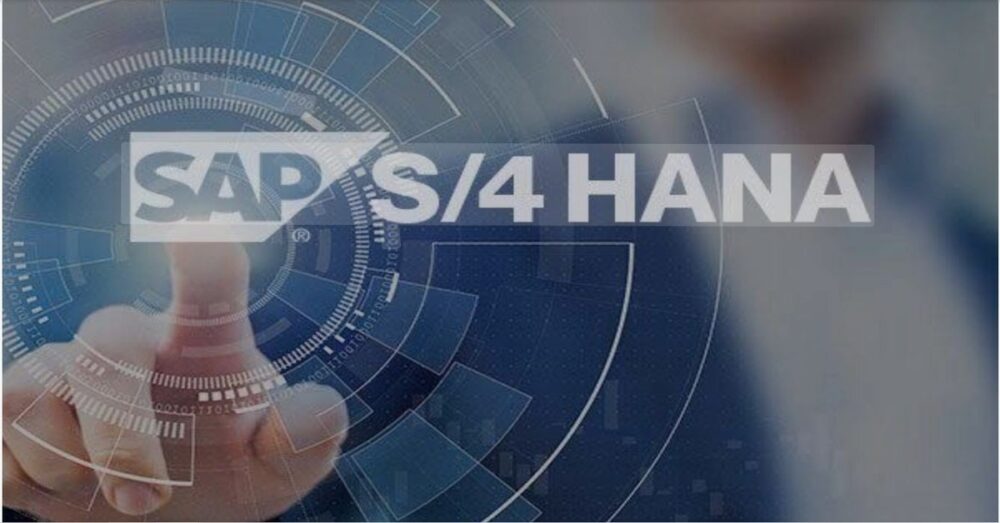
Introduction
In an ERP environment, every business transaction must be captured not only from a logistics perspective (materials, stock, vendors, customers) but also from a financial perspective (accounts, ledgers, cost centers). The process that ensures a smooth link between logistics transactions in Materials Management (MM) and financial postings in Financial Accounting (FI) is known as Account Determination.
In SAP S/4HANA, Account Determination plays a critical role in ensuring that every goods movement, invoice posting, or procurement activity automatically posts to the correct General Ledger (G/L) accounts. Without proper configuration, organizations risk misclassified postings, compliance issues, and incorrect financial reporting.
Why Account Determination Matters
Account determination is not just a technical configuration; it directly impacts:
- Financial Accuracy
- Ensures that material purchases, consumption, and stock adjustments hit the correct G/L accounts.
- Automation
- Reduces manual journal entries by automatically linking MM transactions to FI postings.
- Compliance & Auditability
- Accurate posting supports statutory reporting and internal audits.
- Integration of MM & FI
- Acts as the bridge between materials management processes (goods receipt, issue, procurement) and financial reporting.
- Efficiency in Closing Activities
- Simplifies reconciliation between stock reports and G/L balances.
Example:
- When a company buys raw material worth $10,000, SAP MM records the goods receipt, and SAP FI simultaneously posts an entry to the Inventory Account (Debit) and GR/IR Account (Credit). This seamless posting is possible only because of account determination.
Key Concepts in Account Determination
Account determination in S/4HANA MM is primarily handled by Automatic Account Determination (through transaction keys, valuation classes, and valuation areas). Let’s break down the key elements.
1. Valuation Area
- Defines the level at which materials are valuated.
- In SAP S/4HANA, it can be at Company Code level or Plant level.
- This decision impacts account determination because different plants may need different G/L accounts.
2. Valuation Class
- A classification assigned to a material via the material master.
- Determines which G/L account is used for stock postings.
- Example:
- Raw Materials → Valuation Class 3000
- Finished Goods → Valuation Class 7920
3. Account Category Reference (ACR)

- A link between material type and valuation class.
- Ensures that only allowed valuation classes can be assigned to specific material types.
4. Transaction Keys
- Define the type of financial posting during MM transactions.
- Examples:
- BSX → Inventory Posting
- WRX → GR/IR Clearing
- PRD → Price Differences
- GBB → Offsetting entry for inventory postings
5. Chart of Accounts (CoA)
- Contains all G/L accounts in a company code.
- Every transaction key maps to a specific G/L account from the CoA.
6. Automatic Account Determination (OBYC)
- The core customizing transaction where G/L accounts are assigned to transaction keys + valuation class + valuation grouping code.
- Example:
- Transaction Key: BSX
- Valuation Class: 3000 (Raw Material)
- Assigned G/L Account: 310000 (Raw Material Inventory)
Configuration of Account Determination in SAP S/4HANA
The heart of account determination is in customizing, where SAP consultants define how MM transactions are linked to FI accounts.
Step 1: Define Valuation Level
- Decide whether materials are valuated at plant level or company code level.
- In S/4HANA, the recommended best practice is plant level for greater flexibility.
Step 2: Group Together Valuation Areas
- Valuation grouping codes simplify configuration by grouping multiple plants under one code.
- Example: Plants 1000 and 2000 both mapped to valuation grouping code “0001.”
- This way, the same set of accounts can be assigned without repeating entries for each plant.
Step 3: Define Account Grouping for Movement Types
- Movement types (e.g., 101 – Goods Receipt, 261 – Issue to Order) can be assigned to account modification keys.
- Example:
- Movement Type 201 (Consumption) → Account Modifier VBR → Cost of Goods Sold G/L.
Step 4: Assign Valuation Classes to Material Types
- Ensures only permitted valuation classes can be used for certain materials.
- Example: Raw materials (ROH) linked with valuation class 3000.
Step 5: Automatic Account Assignment (OBYC)
- The critical customizing step.
- Transaction OBYC is used to map:
- Transaction Key (BSX, WRX, GBB, etc.)
- Valuation Grouping Code
- Valuation Class
- Chart of Accounts
- Assigned G/L Account
Example:
- BSX + 0001 + 3000 (Raw Materials) → G/L Account 310000 (Raw Material Inventory)
- WRX + 0001 → G/L Account 200000 (GR/IR Clearing)
Examples of Account Postings

To understand account determination better, let’s walk through some common MM transactions.
Example 1: Purchase Order → Goods Receipt
- Create PO for raw material worth $10,000.
- Post Goods Receipt (Movement Type 101).
System Postings:
- Debit: Inventory (BSX) → G/L 310000
- Credit: GR/IR Clearing (WRX) → G/L 200000
Example 2: Goods Issue to Production
- Issue raw materials to a production order (Movement Type 261).
System Postings:
- Debit: Consumption (GBB/VBR) → G/L 500000
- Credit: Inventory (BSX) → G/L 310000
Example 3: Invoice Receipt
- Vendor invoice received for $10,000.
System Postings:
- Debit: GR/IR Clearing (WRX) → G/L 200000
- Credit: Vendor Account → G/L 300000 (Accounts Payable)
Valuation Grouping Code
Valuation grouping codes reduce complexity by grouping plants that use the same G/L accounts.
- Without Grouping: Each plant requires separate account assignments.
- With Grouping: One valuation grouping code can cover multiple plants.
Example:
- Plant 1000 and 2000 assigned to grouping code “0001.”
- Instead of maintaining BSX account separately for each plant, maintain it once for “0001.”
This approach reduces redundancy and ensures consistent financial reporting.
Split Valuation and Account Determination
In some industries, the same material can have different values depending on its origin, quality, or procurement type. This is handled by Split Valuation.
Example:
- Material: Steel Rod
- Valuation Types: Imported (higher cost), Local (lower cost)
Impact on Account Determination:
- Each valuation type can post to different G/L accounts.
- Imported Steel → G/L 311000
- Local Steel → G/L 312000
Configuration requires mapping valuation type + valuation class to appropriate G/L accounts.
Common Errors in Account Determination

Even though the concept is systematic, many consultants and end-users encounter challenges while configuring or using account determination in SAP S/4HANA MM. Let’s look at the most common ones.
1. Missing Account Assignments in OBYC
- Error: “Account determination not possible for transaction key XXX.”
- Cause: The system couldn’t find a valid entry for the combination of valuation class, grouping code, and transaction key.
- Solution: Check transaction OBYC → Maintain missing accounts.
2. Incorrect Valuation Grouping Code Assignment
- Plants not linked correctly to valuation grouping codes.
- Leads to inconsistent postings across plants.
3. Movement Type Not Assigned to Correct Account Modifier
- Example: Movement type 201 (consumption) not mapped to the right account modifier.
- This results in postings hitting the wrong cost account.
4. Wrong Valuation Class in Material Master
- If the wrong valuation class is selected, all subsequent transactions will post to the wrong G/L account.
- Example: Finished goods assigned to raw material class.
5. GR/IR Clearing Account Reconciliation Issues
- When invoices don’t match GR amounts, the GR/IR account remains open.
- Requires periodic reconciliation to ensure financial accuracy.
Troubleshooting Tips
When errors occur, SAP consultants follow a structured approach to identify and fix them.
Step 1: Check Error Message Details
- SAP provides message number and affected transaction key.
Step 2: Verify Material Master Data
- Ensure valuation class and material type are correct.
Step 3: Review OBYC Entries
- Confirm G/L accounts are maintained for transaction keys (BSX, WRX, GBB, etc.).
Step 4: Use Transaction FS00
- Validate that the G/L account exists, is active, and has correct posting settings.
Step 5: Run Account Determination Analysis
- In transactions like goods receipt, click on the “Account Assignment” simulation to trace postings.
Best Practices for Account Determination
Implementing account determination successfully requires a combination of strong process knowledge and careful configuration.
1. Use Valuation Grouping Codes
- Reduce redundancy and simplify maintenance across plants.
2. Align with Finance Team Early
- Ensure MM and FI consultants agree on account mapping.
- Prevents reconciliation issues later.
3. Document All OBYC Settings
- Maintain a configuration document for audit and troubleshooting.
4. Test All Movement Types in Sandbox
- Simulate procurement, goods movement, and invoicing before go-live.
5. Regularly Reconcile GR/IR Accounts
- Clean-up open items to maintain accurate financial statements.
6. Leverage Standard SAP Transaction Keys
- Avoid unnecessary custom transaction keys unless absolutely required.
Real-World Use Cases of Account Determination

Use Case 1: Manufacturing Company
- A car manufacturing company purchases steel (raw material).
- When steel is issued to production, account determination ensures:
- Debit: Production Consumption Account
- Credit: Raw Material Inventory
- This linkage is critical for accurate Cost of Goods Manufactured (COGM).
Use Case 2: Retail Business
- A retail company procures finished goods from vendors.
- Goods receipt automatically posts to inventory accounts.
- Sales posting later consumes from the same inventory accounts.
Use Case 3: Pharma Industry with Split Valuation
- Pharmaceuticals sourced from both domestic and international vendors.
- Split valuation ensures correct cost tracking.
- Imported stock posts to a different G/L account than domestic.
Learning Path for Consultants and End-Users
If you want to master account determination in SAP S/4HANA MM, follow a structured learning path:
- Understand MM Basics
- Material master, procurement cycle, movement types.
- Learn FI Basics
- Chart of accounts, G/L accounts, account types.
- Study Account Determination Configuration
- Focus on OBYC, valuation classes, grouping codes.
- Practice in SAP Sandbox
- Create test POs, GRs, and IRs.
- Observe postings in FI.
- Advance into Special Scenarios
- Split valuation, subcontracting, consignment, stock transfers.
- Certification Preparation
- SAP S/4HANA Sourcing and Procurement (C_TS452).
- Covers account determination as a major topic.
FAQs on Account Determination in SAP S/4HANA MM

1. What is the difference between valuation class and account category reference?
- Valuation Class: Groups materials to define their account assignment.
- Account Category Reference (ACR): Acts as a link between material type and valuation class.
2. What is the role of transaction OBYC?
- OBYC is the customizing transaction for automatic account determination.
- It maps MM transaction keys to G/L accounts.
3. How does split valuation impact account determination?
- Different valuation types can be assigned to different G/L accounts.
- Enables separate accounting for imported vs. local stock.
4. What happens if account determination is missing?
- SAP throws an error at posting time (e.g., during GR or IR).
- No FI entry is created until configuration is corrected.
5. Can one material have multiple valuation classes?
- No. One material can only have one valuation class.
- However, different materials can share the same valuation class.
6. How is GR/IR account used in account determination?
- At goods receipt, SAP credits GR/IR account.
- At invoice receipt, it debits GR/IR account.
- The balance should ideally net to zero after reconciliation.
Conclusion
Account Determination in SAP S/4HANA MM is a bridge between procurement processes and financial postings. It ensures that every material movement and procurement activity automatically updates the correct G/L accounts in FI, keeping books accurate and audit-ready.
By mastering account determination, organizations can:
- Ensure compliance with financial standards.
- Automate postings with zero manual intervention.
- Enable real-time inventory and cost tracking.
For SAP professionals, this is a core skillset that blends MM process knowledge with FI accounting principles. Whether you’re an end-user, consultant, or learner preparing for certification, a strong grip on account determination ensures smooth SAP operations.
